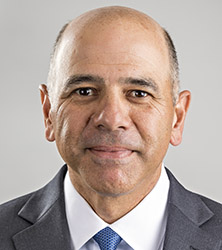YOUNGSTOWN, Ohio – Homeowners who fail to update their policies to reflect recent improvements or to account for inflation run the risk of insufficient coverage if something should happen to their properties.
Local insurance agents and brokers say they are advising their clients to account for increases in home values because of the rising cost of construction materials and services.
Homeowners also need to report to their insurers if they have made any improvements to their houses such as adding a porch or finishing a basement, says Dean Fadel, president and CEO of the Ohio Insurance Institute. That way, their policies can be written to reflect their items.
“Otherwise, you could be left without coverage for certain items,” he warns.

Fadel points to several factors that have caused rates to increase, including the cost of materials and labor.
Shelley Taylor, president of Paige & Byrnes Insurance in Howland, points out that the insurance companies are paying more for claims.
“The companies scrutinize every claim closer,” she says. “There’s not going to be as much wiggle room with claims. You have to have the right coverage on the policy.”
The situation started at least a year ago as supply chain issues arose, then hit home in the last six months.

“People started to notice it when all of a sudden [they were] home with extra time and all these home improvement projects. And you either can’t get the materials or the cost of them is outrageous,” says Merry Wagner, principal agent and owner of Macchione Richardson & Wagner Insurance Agency in Girard.
“We’re trying to be very proactive. Thirty to 45 days before somebody’s policy renews, we’ve been pulling them to review them and make sure that they’ve got adequate coverage on their house,” Wagner says.
That means calculating replacement costs and making sure that the coverage is sufficient to keep pace with inflation, and that the homeowner has “the right coverage… should something happen,” she says.
REPLACEMENT COSTS
Most of the carriers Paige & Byrnes Insurance represents use the Marshall and Swift service for replacement cost estimates, says Taylor.

At Reinhardt’s Agency Inc. in Hermitage, Pennsylvania, policy holders aren’t reporting they have made property improvements in greater numbers than pre-pandemic, says Patty Bender, personal lines manager. But dwelling replacement costs are coming in higher as agents are writing new business or current clients are getting their policies renewed, she explains.
The cost of labor and building materials, which have gone up substantially, and the availability of building materials all come into play. “It’s just so much more costly to repair than to build,” Bender says.
“We haven’t received a ton of calls from people” saying that they’ve made upgrades that would increase the replacement value of their houses, Macchione Richardson’s Wagner says. Many have done maintenance projects that they might have put off, such as replacing a roof or windows, items that don’t necessarily add value but are “things that you just have to do.”
Homeowners understand that prices for replacement materials are higher now, which means replacement insurance costs are going to be higher, Taylor says.
“It’s an easier discussion than it was a couple of years ago,” she says. “People don’t like it, of course. But I think they understand it better.”
One factor that might mitigate surprises is that replacement costs always have been much higher in this area than market value.
“We’re always suggesting [that our clients] make sure that they’re insured properly. We always do a review to make sure we have everything factored into the replacement of your dwelling,” Bender says.
Reinhardt’s sends out a newsletter to clients a few times a year. And, when agents talk to clients, they do a review “just to make sure they haven’t forgotten to tell us about anything they may have done as an improvement to their home,” Bender says.
Rising real estate prices aren’t a direct factor in the cost of insurance policies because replacement cost and market value are different variables, local experts say.
“Replacement cost is truly the cost to build the home if there is a total loss,” says Ellie Platt, owner of Platt Insurance in Howland. Market value reflects factors such as the local school district. Where rising home prices come into play is the increase in home equity, which “shot up” as the real estate market went up, she says.

“In turn, a lot more people were doing home equity loans and doing upgrades to their homes,” Platt says.
Some of the big upgrades include finishing a basement, for which she advises adding water-backup coverage, and adding a swimming pool, “a big one that a lot of people have added over the last couple years.”
In general, Platt advises increasing replacement coverage by 25%.
Some insurance companies offer options such as extended replacement cost or guaranteed replacement.
“We’ve been adding those endorsements on people’s policies as well, just to be safe, because we just don’t know how far this inflation is going to go,” Platt says.
Policyholders can “get insurance-poor real quick.” But without the correct coverage at time of claim, they can get surprised, Taylor says.

“Where people are going to get caught is little things like the water backup,” she says.
Changes in building codes must be addressed during any home repair, which increases replacement costs.
“We’re looking at everyone on a case-by-case basis,” Wagner says. “We’re going back to the basics and making sure we’ve got adequate coverage on each individual home.”
Statewide, says the Ohio Insurance Institute’s Fadel, “I would argue that we’re still very well situated because our rates are much lower than the national averages. In fact, when it comes to homeowner insurance, there are only six other states where there’s a lower average homeowner insurance expenditure than Ohio,” he says
